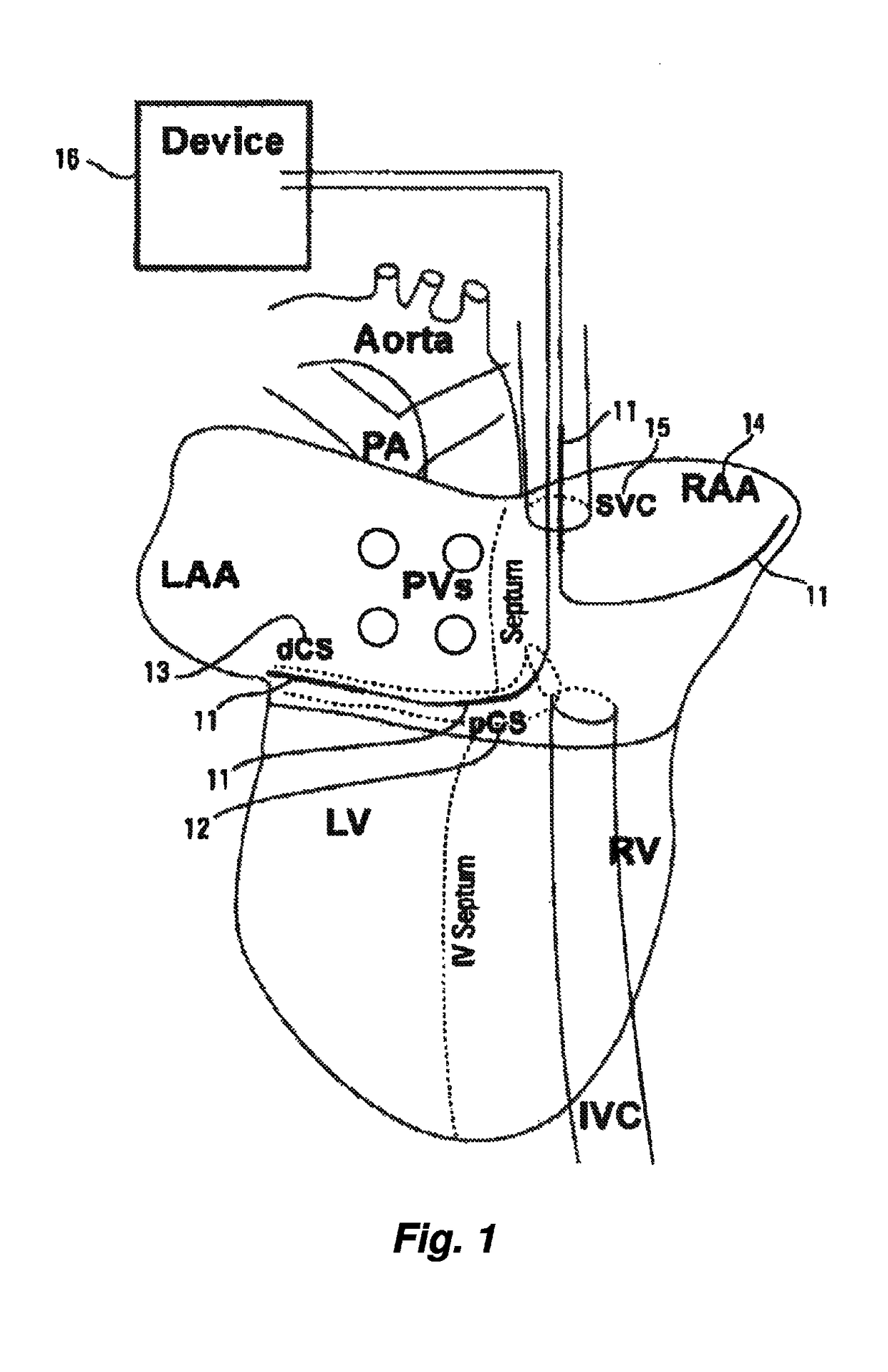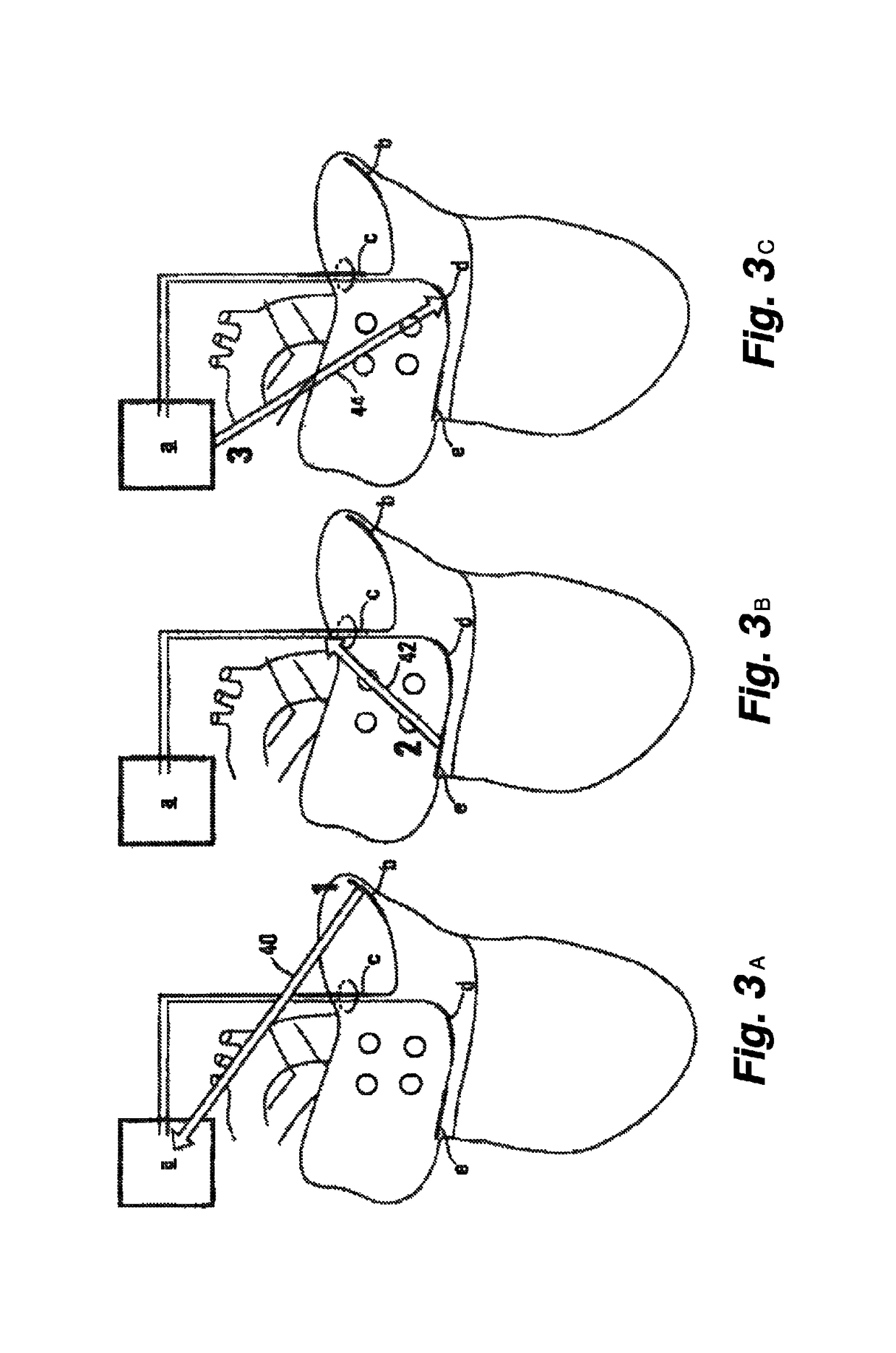Low-energy atrial cardioversion therapy with controllable pulse-shaped waveforms
a low-energy atrial cardioversion and controllable technology, applied in electrotherapy, therapy, etc., can solve the problems of ineffective in significant numbers of patients, none fully meets the needs of the large and growing patient base, and the cost of af more than $15.7 billion annually
- Summary
- Abstract
- Description
- Claims
- Application Information
AI Technical Summary
Benefits of technology
Problems solved by technology
Method used
Image
Examples
Embodiment Construction
[0036]The present invention provides an enhanced atrial defibrillator system, which is intended for human use as an implantable device. The system is designed for delivery of multi-stage electrical-shock therapy, each stage of the therapy comprising multiple pulses, and each pulse comprising multiple, high-frequency sub-pulses. The duration and amplitude of the high-frequency sub-pulses can be varied to produce optimally-shaped pulse waveforms, while the overall energy delivered remains below an energy threshold perceived as painful. Electrical circuits generating and delivering such therapy may include a primary storage capacitor supplied by a charging circuit, and a secondary delivery capacitor charged by the primary storage capacitor. Charging of the secondary delivery capacitor by the primary supply capacitor is switchably controlled to determine sub-pulse voltage amplitude, while high-speed switching of the delivery capacitor determines sub-pulse duration so as to deliver one o...
PUM
 Login to View More
Login to View More Abstract
Description
Claims
Application Information
 Login to View More
Login to View More - R&D
- Intellectual Property
- Life Sciences
- Materials
- Tech Scout
- Unparalleled Data Quality
- Higher Quality Content
- 60% Fewer Hallucinations
Browse by: Latest US Patents, China's latest patents, Technical Efficacy Thesaurus, Application Domain, Technology Topic, Popular Technical Reports.
© 2025 PatSnap. All rights reserved.Legal|Privacy policy|Modern Slavery Act Transparency Statement|Sitemap|About US| Contact US: help@patsnap.com



